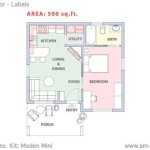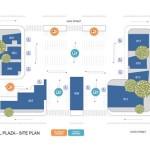Coturnix Quail Housing Plans: A Guide to Free Resources
Coturnix quail are a popular choice for small-scale poultry keepers due to their rapid growth, early egg production, and relatively small space requirements compared to chickens. Providing appropriate housing is crucial for the health, productivity, and overall well-being of these birds. While commercially available quail housing exists, building a custom setup can be a cost-effective alternative, particularly when leveraging freely available plans and resources.
This article explores various free Coturnix quail housing plans, outlining the different types of housing options and the factors to consider when selecting and implementing a design. It also highlights the benefits of using free plans and resources for constructing a suitable quail habitat.
Understanding Different Types of Quail Housing
Before delving into specific plans, it's essential to understand the diverse housing options available for Coturnix quail. The best choice depends on factors such as climate, predator pressure, available space, and the breeder's objectives (e.g., egg production, meat production, or breeding).
Cages: Cages are a common choice for raising quail, especially for egg production. They typically consist of a wire mesh floor, sides, and top, with a collection tray underneath for droppings. Cages can be stacked to maximize space utilization. The mesh size is crucial; it must be small enough to prevent the quail from escaping but large enough to allow droppings to fall through. Adequate ventilation is essential to prevent ammonia buildup. Cage designs can range from simple single-bird enclosures to larger colony cages housing multiple quail.
Pens: Pens offer a larger floor area than cages, allowing quail more room to move and exhibit natural behaviors. These can be indoor or outdoor structures constructed from various materials such as wood, wire mesh, and netting. Outdoor pens require protection from predators (both above and below ground) and weather elements. Pens often include features like dust bathing areas and shelters for shade and protection.
Aviaries: Aviaries are large, enclosed structures designed to mimic a more natural environment for quail. They provide ample space for flight and foraging. Aviaries are typically constructed with a combination of solid and mesh walls, with a roof to protect the birds from rain and sun. They can be adorned with plants and branches to create a more stimulating environment. While aviaries require more space and resources to build, they offer the most natural and enriched living conditions for quail.
Deep Litter Systems: This system entails housing quail on a deep bed of absorbent material like wood shavings, straw, or peat moss. The litter absorbs droppings and, over time, composts, reducing odor and creating a more hygienic environment. Deep litter systems require regular turning and replenishment of the litter to maintain optimal conditions. This system is often used in larger pens or barns, offering a more natural substrate for the quail to walk on.
Accessing Free Coturnix Quail Housing Plans
A plethora of free Coturnix quail housing plans can be found online through various sources. These include:
Online Forums and Homesteading Websites: Many online communities dedicated to poultry keeping and homesteading share plans and designs for quail housing. These forums often feature experienced breeders who offer detailed instructions, material lists, and troubleshooting tips. Users can also ask questions and receive personalized advice from other members of the community.
University Extension Programs: Agricultural extension programs at universities often provide free resources on various aspects of poultry farming, including housing. These resources may include detailed plans, diagrams, and material lists for building quail cages and pens. Extension programs typically focus on practical, science-based information, ensuring that the plans are effective and suitable for different climates and environments.
DIY and Maker Websites: Websites dedicated to DIY projects and crafting often feature plans for building quail housing. These plans range from simple, beginner-friendly designs to more complex and elaborate structures. These websites often provide step-by-step instructions with accompanying photos or videos, making it easier for users to follow the construction process.
Government Agricultural Agencies: Government agencies involved in agriculture may also provide free resources on quail farming, including housing plans. These resources are typically aimed at promoting sustainable farming practices and improving the efficiency of poultry production. The plans may be tailored to specific regions or climates, taking into account local conditions and challenges.
When searching for free plans, it's crucial to critically evaluate the source and the design itself. Look for plans that are well-documented, include clear instructions and material lists, and are designed to meet the specific needs of Coturnix quail. Consider the experience level of the plan's creator and whether they have a track record of successful quail breeding.
Key Considerations When Selecting a Plan
Choosing the right Coturnix quail housing plan involves careful consideration of several factors. These factors include the number of quail to be housed, the available space, the climate, and the breeder's budget and skill level.
Space Requirements: Coturnix quail require a minimum amount of space to thrive. Overcrowding can lead to stress, aggression, and reduced egg production. A general rule of thumb is to provide at least one square foot of floor space per quail in cages and slightly more in pens or aviaries. It is crucial to factor in growth rate, as quail will require more space as they mature. When reviewing housing plans, ensure the dimensions align with the intended number of birds.
Predator Protection: Quail are vulnerable to a variety of predators, including cats, dogs, foxes, raccoons, and birds of prey. Housing must be designed to provide adequate protection from these threats. This includes using strong wire mesh, securing all openings, and providing a solid roof or netting to prevent predators from entering from above. Burying wire mesh around the perimeter of outdoor pens can prevent predators from digging underneath.
Climate Considerations: The climate in which the quail are housed will significantly impact the design of the housing. In cold climates, insulation and heating may be necessary to protect the birds from freezing temperatures. In hot climates, ventilation and shading are essential to prevent overheating. Housing plans should be adapted to local climate conditions, taking into account factors such as temperature, humidity, and rainfall.
Accessibility and Maintenance: Housing should be designed for easy access for feeding, watering, and cleaning. Removable trays or sloping floors can simplify waste removal. The materials used should be durable and easy to clean. Regular maintenance is essential to prevent the buildup of bacteria and parasites, which can negatively impact the health of the quail. Plans should consider ease of access for repairs and modifications.
Ventilation: Proper ventilation is crucial for maintaining healthy air quality within the quail housing. Adequate ventilation helps to remove ammonia, moisture, and dust, which can irritate the birds' respiratory systems. Housing should be designed to allow for natural airflow while preventing drafts. In enclosed spaces, fans or ventilation systems may be necessary to provide adequate air circulation.
Cost and Materials: When using free plans, the cost primarily involves the materials required for construction. Before starting a project, it is advisable to create a detailed material list and obtain quotes from local suppliers to ensure the project is within budget. Consider using recycled or repurposed materials to reduce costs. The choice of materials should also be based on durability, weather resistance, and ease of maintenance.
Legal Considerations: Before embarking on any quail housing construction, it is advisable to check local zoning regulations and building codes. Some areas may have restrictions on poultry keeping or require permits for certain types of structures. Ensuring compliance with local regulations can prevent potential legal issues down the line.
Security: Implement biosecurity methods to prevent diseases from entering the quail housing. Minimize contact with wild birds and animals. Quarantine any new birds before introducing them into the flock to watch for diseases. Properly dispose of dead birds. Control any parasite population by using proper floor or ground management and sanitation.
By carefully considering these factors and selecting a plan that meets the specific needs of the quail and the breeder, it is possible to create a comfortable, safe, and productive environment for these valuable birds. The availability of free plans and resources makes it easier and more affordable than ever to raise Coturnix quail in a properly designed housing system.

Free Quail Coop Building Plans Silver Homestead

Free Quail Coop Building Plans Silver Homestead

Quail Coop Ideas Learn How To Build Coops For The Tiny Life

20 Homemade Diy Quail Cage Plans And Ideas

Quail Cottage Coop Silver Homestead

Great Depression Coturnix Quail Keeping Natural Feed Recipes Silver Homestead

Free Quail Coop Building Plans Silver Homestead

Easy Quail Cage With Egg Roll Out Tray

How To Build A Quail Habitat With Pictures Wikihow

How To Build A Predator Proof Quail Or En Run In 10 Easy Steps Self Sufficient Me








